Welcome to the Tarot Blog Hop!

An international group of tarotists are all writing on the same topic and then linking to each other so that the reader can hop from one blog to the next, seeing all the permutations and facets that the topic inspired in different writers.
Aisling the Bard of TarotWitchery wrangled this hop, providing us the theme, A Union of Opposites. Aisling explained that in folk traditions, this day of the first harvest celebrates the bounty of the land while also honoring the memory of the elder who died in the process of making the harvest possible. More info on this fascinating story can be found at the Master List page.
PREVIOUS | MASTER LIST | NEXT
I designed a Union of Opposites tarot spread back in August 2008, and decided it was worth sharing with you. I designed it as part of the Tarot Geeks meetup, when we were doing our two-year cycle studying qabalah and tarot. The Union of Opposites, frequently referred to as coniunctio oppositorum, is a concept introduced in pre-Socratic Greek philosophy, developed into an alchemical term, and then later was popularized by psychotherapist C. G. Jung. A Glossary of Jungian Terms defines the coniunctio oppositorum as:
“an alchemical operation that combines two chemicals to produce a third, different chemical. Psychologically, this corresponds to an unconscious experience (say, savage lust) which, combined with consciousness, becomes something different (healthy sexual desire). Can also mean a synthesis of ego and unconscious, which generates the reconciling or unifying symbol and which explains its usually incestuous character. Also an alchemical correspondence to psychology’s concept of the transference. Wholeness requires a coniunctio oppositorum (conjunction of opposites).”
The Temperance card is often considered the card that blends opposite qualities. In the B.O.T.A. card illustrated here, the angel pours water onto the lion, symbol of the fire sign Leo, while sparks descend from the torch onto the eagle, symbol of the water sign Scorpio. The angel stands between solid earth and fluid water, bridging those two contraries. On the Tree of Life, the card represents the vertical path that connects Yesod, the nocturnal luminary the Moon, with Tiphareth, its daytime counterpart, the Sun.
The following is the spread I developed based on my study of this symbolism. It includes a reading I did for myself eight years ago this month, in which I asked about how to get out of my tedious temp job and start expressing my skills and talents creatively as a writer. Considering that by the end of that month the temp job had hired me full time, one year later–August 2009–I started my blog, two years after that I started doing my tarot business full time, and just last month I started a Patreon account for my blog so people can make monthly pledges to support my writing, I would say that this spread worked quite well for helping me understand my situation and make lasting changes to my life!
Incidentally, the primary coniunctio oppositorum technique used here, of finding common symbols in cards in the spread, and then identifying one card that combines the symbols (I since started calling it a synthesis card), was first developed here and became the foundation of my Empyrean Key process, which I teach primarily in my Journey to the Ultimate Boon class.
A Union Of Opposites
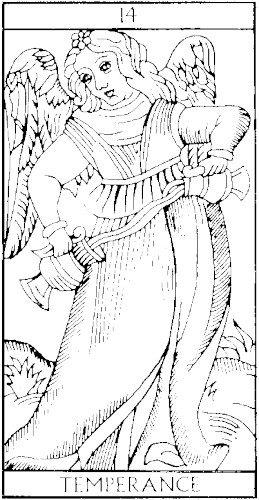
This French version of Temperance found illustrated in The Book of Tarot by Fred Gettings shows water flowing in three streams as it leaves the top jug (blue in this version, with her skirt red behind it) but becoming only two streams as it enters the bottom jug (red here, and behind it her skirt is blue). According to Gettings, this symbolizes the transformation of life force as it flows from the emotional or subconscious (blue jug) into conscious expression (red jug). The subconscious is working in a context of active creation (such as the Trinity or any threefold force—symbolized by three streams with a background of red) while manifestation happens in a passive environment (such as nature, suggests Gettings—symbolized by the blue background) and can only be perceived as duality (the two streams).
This symbolism is employed in this layout by working backwards. We start with a duality we can perceive in our lives, picking two cards to represent those opposites. Then we randomly draw two cards to represent those opposites on a higher level. The fifth card we intentionally choose by finding a card that combines symbols from the previously placed cards—creating a union of opposites and allowing us to discover and work with that current of divine force which is invisible to ordinary perception.
Instructions for Coniunctio Oppositorum (Union of Opposites) Spread
Get a spread sheet pdf for this layout by clicking the image below.
1. Place the Moon at the bottom center of your reading cloth. Place Temperance above it in the middle, and place the Sun at the top center of the cloth.
This represents the movement up the Tree of Life from Yesod (Foundation, associated with the planetary body the Moon) to Tiphareth (Harmony or Beauty, associated with the planetary body the Sun). The path linking Yesod to Tiphareth crosses the veil that separates us from our higher selves, our divine selves (which in turn is only a pale reflection of the Divine, unknowable at Kether, represented in the Rider-Waite-Smith card and the B.O.T.A. card illustrated above as a glowing crown in the far background). The path of Samech, associated with Temperance, is the path of equilibrium (between the more dangerous and imbalanced paths of Ayin, The Devil, and Nun, Death) that allows us to rise to a higher level.
2. Think of a question or subject matter first.
For myself, I would like guidance in moving away from the temp work I’ve been doing and finding a full-time job that really fulfills me.
3. Cards 1 and 2. Pick your opposites.
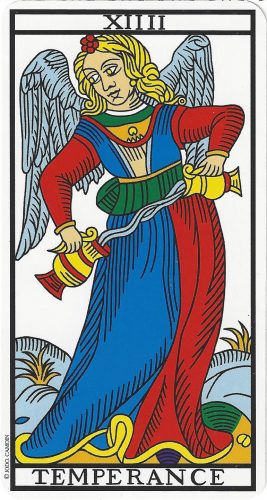
In my case, it will be vocation versus work. I’m going to pick one card to represent the tedious temp work that I’ve been doing for the past two years and one card to represent following my heart’s call to more artistic work. I look through the cards of my Robin Wood Tarot and decide to use 8 Pentacles for “work” and 3 Pentacles for “vocation.” The 8 shows a boy at a work table looking down at a wooden pentacle he has carved as he puts on the finishing touches. Six pentacles just like it line the walls above a window that opens behind him onto an outdoor scene with castle, river and rolling hills. His tools– plane, chisel, clamp–and another pentacle are scattered around the table. This is how I feel in my current situation—doing the same thing over and over while the whole world goes on outside without me.
The 3 shows a white-haired man looking up as he chisels the final details onto a stone sculpture, only a small part of which we can see. The man is working on a feather in what appears to be a huge wing overstretching him. The background shows stylized gold rays on the wall, indicating solar energy. The card brings to mind the story of Daedalus, who fashioned wings for his son Icarus. The wings were held together with wax, and despite the warnings of Daedalus, Icarus flew too close to the sun. The wax melted and he plunged into the ocean. Like the story of Phaeton, it is a warning to steer the middle course. Both stories show a son in defiance of his father approaching the Sun (Tiphareth), but plunging to his death in water below (Yesod). Negotiating the path of Yesod to Tiphareth is under the purview of Samech, Temperance. The story reflects my desire for great things and fear of failure.
4. Cards 3 and 4. The next two cards are laid out randomly—shuffle the deck, cut it, and then lay down cards 3 and 4. Examine them and interpret them in relationship to your chosen cards.
In the position of Secret Desire I got the Page of Cups, showing a girl standing on a quay by the ocean, holding a cup with a winged creature rising up out of it. In the background are the rainbow pastels of a sunrise or sunset, but no sun is visible. The winged creature has an inner light that sends out rays in all directions. The winged creature in the Page’s cup seems to be telling me that this small thing arising out of the subconscious can grow into the beautiful and overarching wing of the art I wish to accomplish. The sun is not visible because I am looking within—the inner sight indicated by the position. The question this raises is how to bring this inner essence into manifestation as the substantial work I wish to create.
For the position of Conscious Goal I got the 8 Swords Reversed, showing a bound and blindfolded woman caged in a circle of 8 swords stuck point down in the ground around her. She stands at the rocky edge of the ocean, the tide lapping up against her feet, while a few rays of sunlight pierce through thickening gray storm clouds. Since it is reversed, we could say that my goal is to release myself from the bonds of the tedium I feel from the work I’m doing. She seems to be lost in the incoming tide of Yesod unless Tiphareth can pierce through the clouds and guide her out. But what tools does she have?
5. Card 5. Compare cards 1 and 3. What unity do they have, or what common element do they share? Think of this as one of the images in the picture of the card—perhaps both cards have a flower in them, then the common element would be a flower. Next examine cards 2 and 4. What is their commonality? Perhaps it’s a river. After finding a common symbol for each set of cards, go through your deck and find a card that has both those symbols on it; in this example, you would be looking for a card that has both a flower and a river on it—not nearly as hard to find as you might imagine! But you can tweak your symbols a bit if you have to.
As I looked at cards 1 and 3, I noticed the image of the wing as common—the wing of the sculpture the old man carves and the wings of the creature arising from the cup.
Next, I looked for the common element for cards 2 and 4. What first came to mind for me was that the swords of the 8 Swords have a certain functional similarity to the chisel in the 8 of Pentacles. Both can be used to carve. Also, I’ll keep in mind that both Card 2 and Card 4 are eights.
To pick the last card, I’m going to look for a card that is the union of opposites: that has the wing of the first set of cards and the carving implement of the second set. I look through the deck and am most satisfied with the Knight of Swords. The Knight shows a man on a Pegasus, the wings of which are very similar to the wing being carved in the 3 Pents. He flies in stormy skies, holding an upraised sword, the carving implement of our 8s, which captures a current of electricity from a bolt of lightning in the storm. He looks down and to the left, towards the bored boy carving the pentacles, and I’m certain he can zap that current into the boy and elevate him to a higher status.
The sword he holds is the same as that shown in the Ace of that suit. The Ace of Swords has as the hilt the Egyptian winged disc that represents Horus, the son of Osiris, a solar deity. The sword points straight up, spiraled by a double helix of roses and olives, surmounted by a laurel wreath crown. The winged disc is also associated with the staff of Hermes, the Caduceus. In essence, this depiction of the Ace of Swords is an upside-down Caduceus.
This gives me food for thought in trying to decipher the meaning behind my reading, but it seems that there is a paradox here, in fact, a conjunction of opposites, as the sword upraised pierces the crown (achieving the goal of Kether), but pointing down delivers the vibration of energy in the healing of Hermes. The winged figure in the Temperance card is generally considered to be Michael, the archangel associated with fire and solar energy, but some experts, such as Wirth, equate the figure with Raphael, whose name means, “the healing of God.” Compare also Malachi 4:2, “But unto you that fear my name shall the Sun of righteousness arise with healing in his wings…” (KJV).
6. The final answer. Now that you’ve interpreted all your cards, the last step is always to summarize your reading and answer the question or concern you started with. What did you learn from this reading?
The irony in my situation, and I’ve known this, is that any job is built on the routine and structure of what can seem to be a tedium of repetition. If I want to be a writer, I need to sit and write everyday. I can’t wait for inspiration to strike: that will drown me in Yesod for certain. One writer is famous for saying, I get inspired at 9 a.m. everyday when I sit down at my typewriter. That is the union of the opposites of inspiration and routine. So what does this reading tell me that I don’t already know? What can I learn and apply? It’s interesting that the idea of healing came up. I have certainly worked for many years on growth and health, but have I ever applied that to my writing in particular? I have tried working with spiritual energy and ritual with my writing with some good results, but I have not ever tried to do any healing work in terms of this. Perhaps that is the way to success. It is the way of Temperance. One’s temper is the balance of the four humors.
***
If you loved this spread, please check out my online class Tarot Tree House. I’m exploring the relationship of the 78 tarot cards to the Tree of Life through blog posts available to everyone. For those who promise a monthly pledge and become my patron, there are additional resources available, depending on your pledge level, including a private Facebook group, tarot spreads like the one in this post, meditations, and webinars.
PREVIOUS | MASTER LIST | NEXT
_________________________________________________
Joy Vernon is widely recognized by tarot professionals as an expert tarot teacher and respected community leader. With over twenty years’ experience teaching energetic and esoteric modalities, Joy brings expertise and practiced familiarity to her specialty of esoteric tarot, which layers astrological and qabalistic symbolism onto the traditional tarot structure. Under her leadership, the Denver Tarot Meetup has grown into the most active and one of the largest tarot-specific meetups in the world. Joy works as a psychic and teacher at Isis Books. To learn more, please visit JoyVernon.com.
© 2016 by Joy Vernon. All rights reserved.




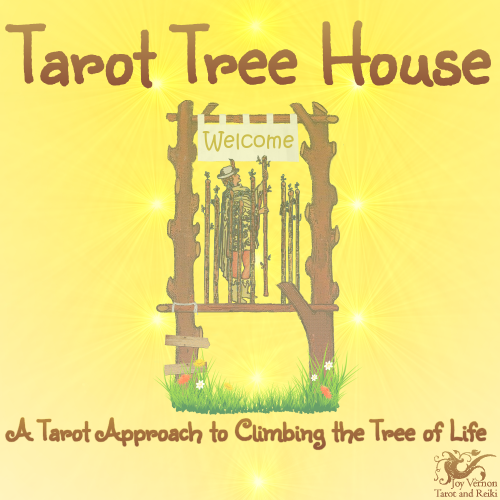
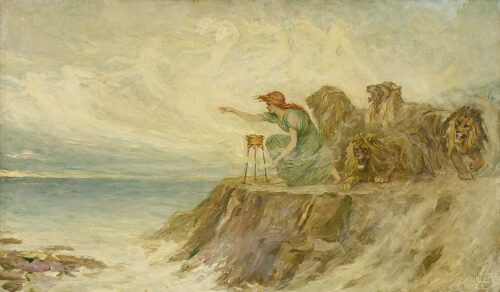




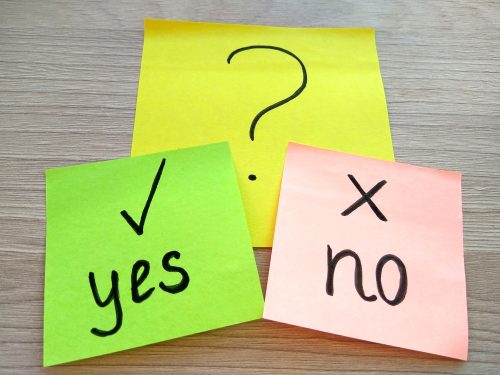
It’s really interesting to me as this spread is also similar to the merkabah, two triangles merging together almost like a union of opposites. Tarot I think is a lot like that a means to travel to the right answer, temperance or patience is very much about taking time, well for me anyway so thank you for this 🙂
Yes–I love the symbolism of the intertwined triangles and have used it in a lot of spreads! 🙂
I like that–“a means to travel to the right answer.” Well put!
Lovely thinking, and a lovely spread–I will definitely be using this! Thank you!
I think this is a good one! Thanks, Aisling, and thanks for a great hop topic!
I love your mind, Joy. Just love it. You process and see things so differently than me so I always learn. thank you!
Aw, shucks, Arwen. Thank you!
I really thought this was interesting – and using a case study to illustrate it makes it even better – thank you 🙂
Yes, especially interesting for me, finding it after eight years! 🙂
Wow! Wow! Wow! Great spread and thanks for the pdf worksheet!!
Glad you like it!
Oh, it was so deep and thorough, had to read it twice but it was worth every moment, thank you so much for sharing it with us, it was really enjoyable and a lot to learn from! 🙂
Fascinating! I’m going to put aside some time over the weekend to try this out. Thanks for (as always) a thought–provoking post, Joy!